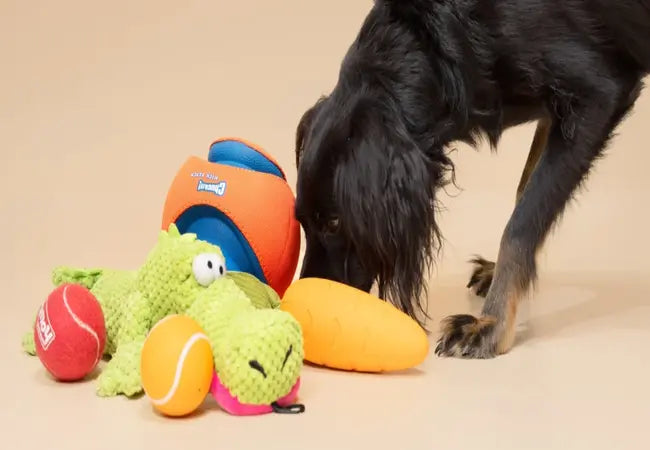In this article
🐾 Vet Guide to Feeding Kittens 101: What to Feed, How Much & How Often 2025 🍼
By Dr. Duncan Houston, BVSc — veterinarian & Ask A Vet founder 🐱💡
1. 🍼 Feeding Newborn & Bottle‑Fed Kittens
Kittens that are orphaned or less than ~4 weeks old need kitten formula—not cow’s milk! Use a high-quality, AAFCO‑approved formula such as PetAg® KMR. Feed every 2–3 hours in week one, then every 3–4 hours in week two, and stretch to every 4–6 hours by week three :contentReference[oaicite:2]{index=2}.
For bottle feeding: warm formula to body temperature (~100 °F), feed ~8 mL per ounce of body weight per day—divided evenly—and weigh kittens daily to ensure steady growth :contentReference[oaicite:3]{index=3}.
2. 🧁 Transitioning to Solid Food (4–8 Weeks)
From 4–5 weeks, introduce “gruel”—wet kitten food mixed with formula. Feed 4 times/day until 6 weeks, then 3 times/day until 8 weeks :contentReference[oaicite:4]{index=4}.
At ~6 weeks, offer both wet and dry kitten formulas; by 8 weeks they’re typically fully weaned and ready for solid food twice daily :contentReference[oaicite:5]{index=5}.
3. 🍽️ Balanced Diet: Wet & Dry Ratio
A 50:50 mix of wet and dry kitten food ensures proper hydration and nutrition. Wet food aids fluid intake, while dry food supports dental health :contentReference[oaicite:6]{index=6}.
Choose AAFCO-approved kitten food: high in protein (≥30%), moderate fat, and enriched with taurine, DHA, vitamins, and minerals essential for growth :contentReference[oaicite:7]{index=7}.
4. 📆 How Often to Feed (8 Weeks–6 Months)
From 4 months and younger: 3 meals/day. After 4 months up to one year: two meals/day works well :contentReference[oaicite:8]{index=8}.
Use feeding tables (based on weight and food brand) as starting points, then adjust for appetite and body condition :contentReference[oaicite:9]{index=9}.
5. ⚖️ How Much to Feed—Sample Calorie Guide
On average, a healthy kitten needs:
- 3–4 months (~5.5 lb): ~340 kcal/day
- 6 months (~6.5 lb): ~400 kcal/day
- 8 months (~7.5 lb): ~440 kcal/day
- Up to 11 months (~10 lb): 540 kcal/day :contentReference[oaicite:10]{index=10}
Check package labels and adjust based on growth rate and body score—aim for a lean, athletic build.
6. 💧 Hydration & Eating Style
Always provide fresh water. Kittens often prefer running water—fountains can encourage drinking.
Notice preferences: some kittens free-feed dry food, others need scheduled meals. Either approach is fine—just monitor intake and body condition :contentReference[oaicite:11]{index=11}.
7. 🍲 Transition to Adult Food (12 Months)
Begin transitioning at ~12 months. Mix adult food in over 7–10 days—25% new food increases every few days—to prevent digestive upset :contentReference[oaicite:12]{index=12}.
Monitor weight and adjust portions accordingly—adult maintenance needs are lower than kitten requirements.
8. 🧬 Nutritional Essentials
- High‑quality protein: ≥30% dry matter :contentReference[oaicite:13]{index=13}.
- Taurine and arginine—essential amino acids not found in plants :contentReference[oaicite:14]{index=14}.
- DHA & omega‑3: support brain and vision development :contentReference[oaicite:15]{index=15}.
- Adequate vitamins A, D, E, B‑complex, minerals like calcium, phosphorus, zinc :contentReference[oaicite:16]{index=16}.
AAFCO or FEDIAF verified balanced formulas are ideal; avoid home-prepared diets unless guided by a vet nutritionist.
9. 🥛 Special Tips: Orphans & Bottle‑Feeding
Use kitten milk replacer like PetAg® KMR—do **not** use cow or goat milk. Bottle-feed warm, every 2–4 hours depending on age, and shift to gruel at ~4 weeks :contentReference[oaicite:17]{index=17}.
Clean bottles, weigh daily, and seek vet guidance if weight isn’t steadily increasing.
10. 🛠️ Monitoring Growth & Troubleshooting
Keep track with weekly weight checks on a gram scale (especially for orphans). Growth curves should be smooth.
Seek veterinary care if:
- Weight gain stalls or plummets
- Diarrhea, vomiting, or poor appetite
- Visible bloating or lethargy beyond 24 hrs
11. 🧩 Supplementary Enrichment & Bonding
Feeding is also bonding! Use interactive toys, food puzzles, or clicker games to stimulate both mind and body during meals. It promotes learning, activity, and healthy digestion.
Consider timed feeders or puzzles if you’re not home—keep meal routines consistent for mental stimulation.
Looking for vet-recommended tools? Ask A Vet experts can guide you to trusted food puzzle brands like Woopf for dry feed enrichment, and cushioned bowls from Purrz that promote comfortable, slower eating.
12. 🧠 FAQs
🔍 Q: When is kitten safe to free feed?
Once they’re ~6 months and on solid routine, you may offer dry food free choice—but monitor weight. Wet food should still be portioned.
🥣 Q: I missed a feeding—what now?
If under 6 weeks, feed as soon as you notice . For older kittens, just resume next meal—don’t double up.
🐟 Q: Can I feed fish/salmon exclusively?
No—fish-based diets tend to be unbalanced over time. Use a complete kitten formula for full nutrition.
13. 🏁 Final Thoughts from Ask A Vet
Feeding kittens correctly supports their incredible growth and sets the stage for lifelong health. From formula and gruel to solid food and enrichment, use a structured and flexible approach tailored to each kitten’s needs.
Need help crafting the perfect feeding plan as your kitten grows, or curious about brands like Woopf or Purrz? Our vets at Ask A Vet are available 24/7 via the app with personalized nutrition support 📱🐾.
Download at AskAVet.com—because every kitten deserves a healthy start! 🐱💬






